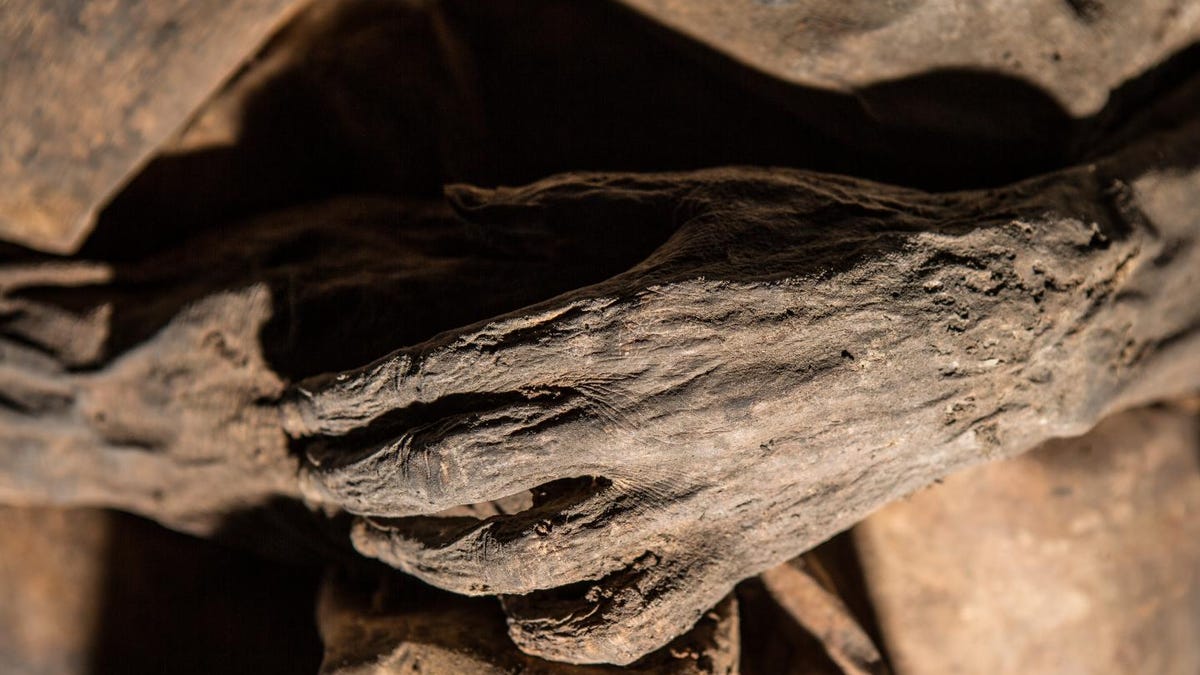Mummified child could change history of smallpox
DNA from a mummy buried under a church indicates the contagious and sometimes fatal disease may have struck much later than previously thought.

When did humans first suffer from smallpox?
Historical anecdotes, and possible physical evidence such as pockmarks, suggest the virus dates back millennia. But cold, hard DNA from a 17-century mummified child found buried under a Lithuanian church may offer a new timeline for the contagious and sometimes fatal disease.
The mummy was first found in 2015 through a collaboration with the Lithuanian Mummy Project.
"There have been signs that Egyptian mummies that are 3,000 to 4,000 years old have pockmarked scarring that have been interpreted as cases of smallpox," says Ana Duggan, a postdoctoral fellow at the McMaster University Ancient DNA Center in Canada and primary author of a new study on the findings that appears in the journal Cell Biology.
"The new discoveries," she adds, "really throw those findings into question, and they suggest that the timeline of smallpox in human populations might be incorrect."
The child mummy, which radiocarbon dating places between 1643 and 1665, when several major European and Asian epidemics took hold, was first found in 2015 within the crypt of the Dominican Church of the Holy Spirit in Vilnius.
The remains, thought to be between 2 and 4 years old, didn't show visual signs of the disease.
They did, however, yield a complete genome for the variola virus ancestral to all known 20th-century smallpox strains. This is the oldest version of the actual virus found, as opposed to scarring that could not be conclusively attributed to variola.
Ana Duggan examines a piece of mummified tissue.
The researchers compared DNA taken from the mummy to versions of the variola virus genome dating from the mid-1900s and before smallpox was eradicated in the late 1970s after a successful worldwide vaccination program.
Using techniques that amount to a "molecular clock," they found the samples share a common viral ancestor that originated sometime between 1588 and 1645. Those dates coincide with a period of exploration, migration and colonization that would have helped spread smallpox around the world.
"So now that we have a timeline, we have to ask whether the earlier documented historical evidence of smallpox, which goes back to Ramses V and includes everything up to the 1500s, is real," said co-author Henrik Poinar, director of the Ancient DNA Centre at McMaster University. "Are these indeed real cases of smallpox, or are these misidentifications, which we know is very easy to do, because it is likely possible to mistake smallpox for chicken pox and measles."
The researchers now hope to compare their sample from Lithuania to samples from other outbreaks sweeping other European countries at the same time. More broadly, the scientists hope their work will help virologists continue to trace smallpox and other viruses back through time.
It's an exciting time for mummies. Earlier this week, scientists published research suggesting mummified knees housed in an Italian museum likely belonged to ancient Egyptian Queen Nefertari.

